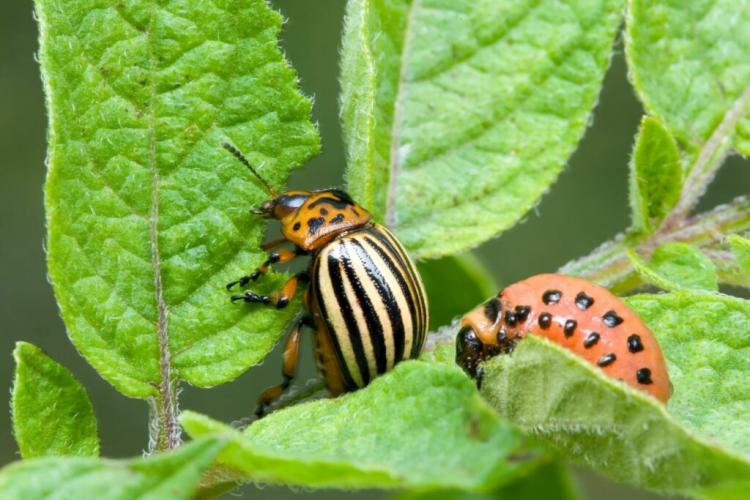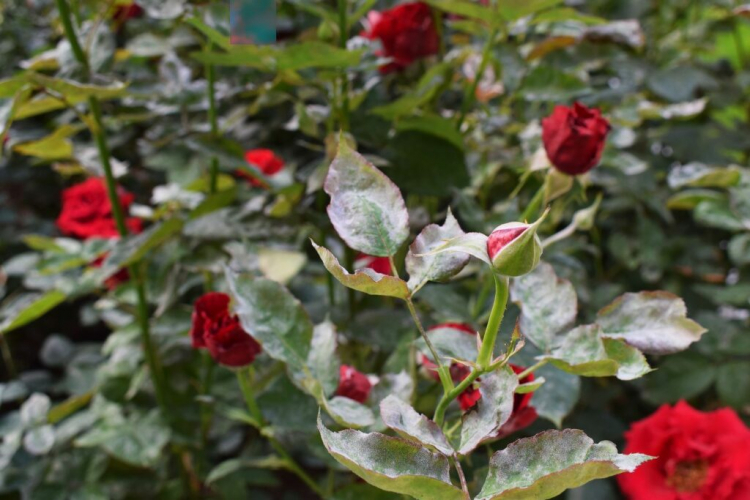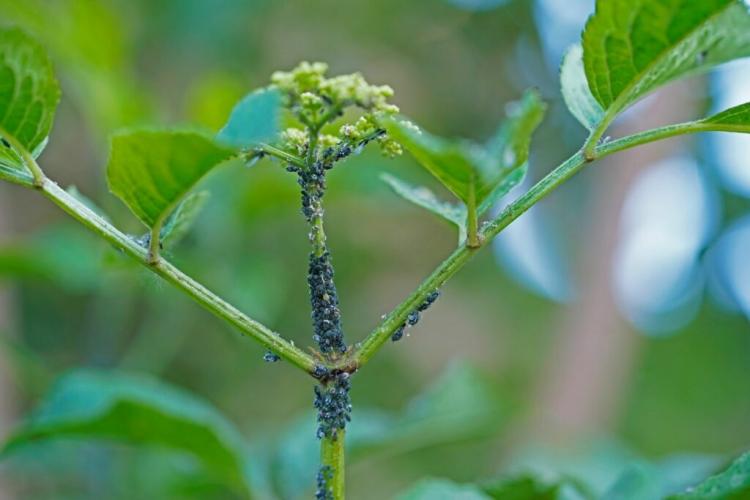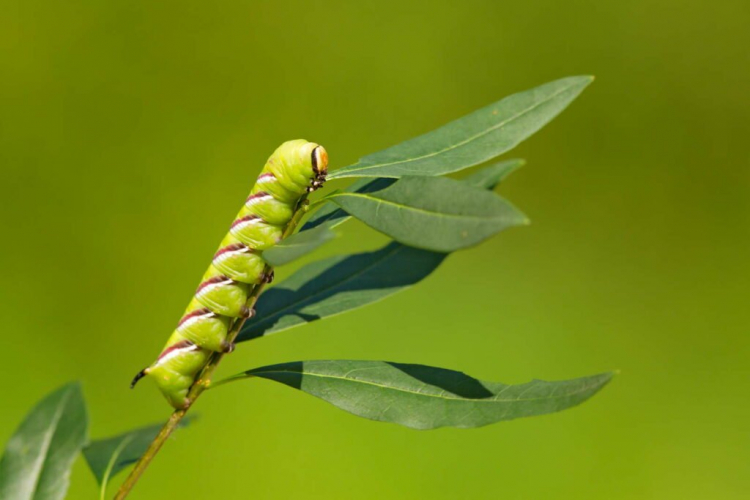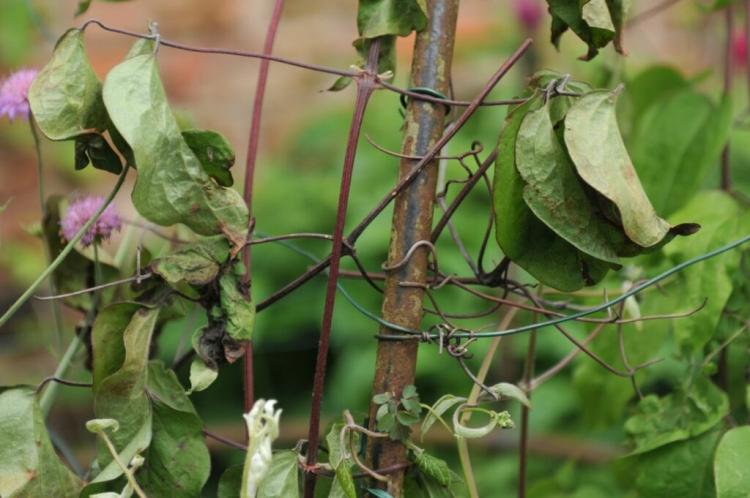How To Get Rid Of Colorado Beetles: Natural Tips
The pests can destroy entire potato crops. We reveal which remedies help against the Colorado potato beetle and how to fight it naturally.
Colorado beetles can become a real nuisance, it is not for nothing that many parents and grandparents were forced to “collect potato beetles” as children to save the harvest. It is therefore important to identify the pest at an early stage and to prevent it. If it is already too late for this, there are also various ways of combating it, ranging from home remedies and biological agents to chemical sprays.
Colorado beetle: origin and characteristics
Table of Contents
The Colorado potato beetle ( Leptinotarsa decemlineata ) is a leaf beetle and originally comes from North America. It was introduced into Europe at the end of the 19th century and it wasn’t long before the Colorado beetle became a pest. At that time there were no effective pesticides and so the people had no choice but to collect the beetles from the potato fields. The Colorado beetle could only be effectively combated with the advent of modern pesticides. The early pesticides, however, were so toxic that the potatoes would probably never have come on the market today.
To fight the beetle as effectively as possible, it is helpful to understand its life cycle. In spring, when the first potatoes sprout, the Colorado beetle wakes up and leaves its winter quarters. After the beetles have left the ground, they start to feed on the small potato shoots and lay their eggs on the underside of the leaves of the potatoes. Depending on the weather, the larvae hatch from the eggs after three to twelve days and begin to eat the plants much more strongly than the adult animals. The larvae go through four stages of development before they develop into adult beetles.

In the first two larval stages, the larvae are very sensitive to plant protection measures and are not yet very hungry. However, once the third larval stage has been reached, the big feeding starts, and biological insecticides now also work less well. For this reason, the larvae should always be controlled at an early stage of development. In dry weather, up to two generations of Colorado beetles are possible within a year. If the control is effective right from the first generation, the number of Colorado beetles will be lower and almost negligible in the following generations.
Recognize Colorado beetles and larvae
Adult Colorado potato beetles are about one centimeter long and have a very characteristic appearance: They are yellow and have black longitudinal streaks on their backs. In addition to identifying the adult beetle, you should pay special attention to the larvae. The compact, red larvae are also easy to recognize by their black spots on the sides. If you have particularly good eyesight, you may also be able to see the bright orange-yellow eggs on the underside of the leaves. The eggs are arranged in a round clutch.
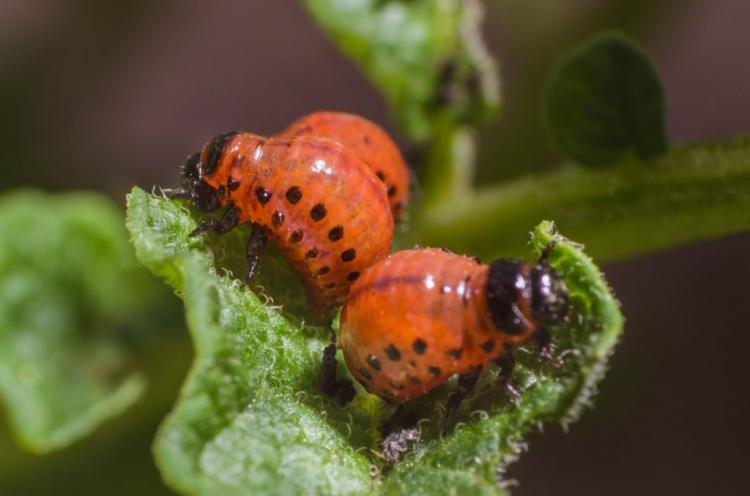
The damage caused by the Colorado beetle
An infestation by the Colorado beetle is relatively easy to recognize. You can expect feeding marks from the first sprouting of the potatoes. Since the potato plant is spurned by many pests because of its poisonous ingredients, potato beetles are often the culprit when there are clear signs of eating. To be more precise: the older larvae of the beetle are responsible for the eaten leaves. If enough larvae are available, they can eat a potato plant down to the thick leaf veins. This usually means a total loss of the harvest.
How to tell if it is a Colorado beetle infestation:
- Colorado beetles are about an inch tall and strikingly yellow in color, with black vertical stripes on their backs
- Colorado beetle larvae are colored red with black spots on the side
- Immediately after budding, traces of feeding can be seen on the leaves and shoot tips
Prevent the Colorado potato beetle
Since the Colorado potato beetles come out of the ground with the sprouting potatoes, nets or the like are of no use. Cultivation breaks only affect if no potatoes are grown in the entire garden for years, as Colorado beetles can easily overcome distances up to 500 m in length in search of food. But there are definitely ways and means to reduce the likelihood of a threatening Colorado beetle infestation.
It is very effective to recognize the first Colorado beetles in spring and act quickly. We, therefore, recommend that you keep an eye out for the adult animals from the beginning of May. The first larvae can then be expected in June.
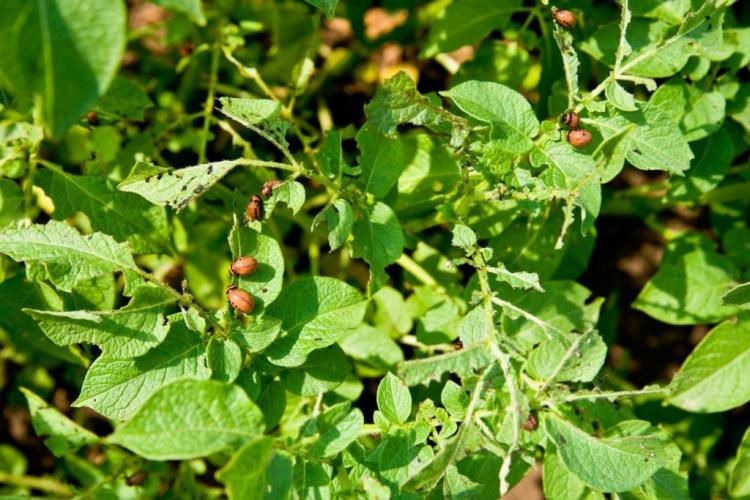
The timing of potato cultivation can also help prevent infestation. If you dig your potatoes underground, they will have a head start on the Colorado beetles. The Colorado beetles and their larvae do less damage to the potato plants and you can avoid control. In addition, and especially if you often have problems with Colorado potato beetles, it is worth using early-ripening potato varieties. Here, too, the common Colorado potato beetle can no longer exploit its full potential for damage.
In addition, beneficial insects can reduce the number of Colorado potato beetles. So make sure you have plenty of retreat areas so that as many beneficial insects as possible “work” for you in your garden. The most useful insects against Colorado potato beetles include predatory bedbugs and ground beetles.
Summary: How to prevent Colorado beetle infestation
- Observe cultivation breaks within a 500 m radius
- Keep an eye out: from May for adult Colorado potato beetles; from June after larvae
- Propelling potatoes to give your potatoes a head start in growth
- Early ripening varieties help to reduce the loss of yield
- Promote beneficial organisms such as predatory bugs and ground beetles
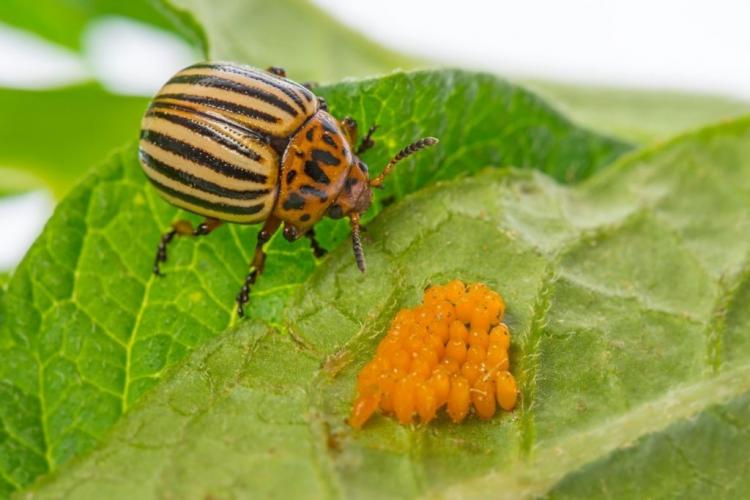
Fight Colorado beetles
When fighting the Colorado beetle, in addition to the choice of the right agent, the time of control is of decisive importance. Since the adult Colorado potato beetle does not in principle cause any damage worth mentioning, its control is of secondary importance. Much more important is the control of the first generation of larvae in spring. If this generation of larvae is effectively combated, a large Colorado beetle population can no longer build up over the course of the year. Under normal conditions, you will then have quiet from the Colorado potato beetle and relax and wait for the potato harvest.
We recommend using a biological agent directly in the event of an infestation in spring. Neem oil-based supplements are an excellent way to control Colorado beetles in a plant-based way. Organic pest-free neem is based on this valuable neem oil. The herbal remedy ensures that feeding is stopped quickly and is not dangerous to bees. For use on the potato, simply mix 2.5 milliliters of organic pest-free neem with 300-700 milliliters of water. This emulsion can then be used to treat around ten square meters of potatoes.
You might so like: Parasitic Wasps: Useful Helpers Against Moths
Since the active ingredient is absorbed by the plant, hidden insects are also reached. An important point: The development of the Colorado potato beetle larvae is becoming more and more resistant to pesticides. It is, therefore, best to apply the pesticide shortly after the egg hatches in spring. As with any plant protection product, correct application is also important for organic pest-free neem to achieve maximum treatment success, as well as to protect the environment and the user – always read the package insert before use.
Combat Colorado beetles naturally with beneficial insects
At the moment there are no beneficial insects available that can control the Colorado beetle really well. We can only refer to the preventive measures at this point. By promoting naturally occurring opponents, such as ground beetles or predatory bedbugs, you reduce the likelihood of mass reproduction. In this way, you can avoid a plant protection measure with plant protection products.
You might so like: Flour Moths: How To Get Rid Naturally, Recognize And Prevent
Combating Colorado beetles biologically: home remedies and Co.
The oldest and at the same time the most laborious method is to collect the Colorado beetle. For good control, however, the larvae should also be collected and the egg clutches should also be crushed or wiped off. This may not be a problem with individual potato plants on the balcony or terrace. However, if you are the proud owner of a large potato bed, collecting it is an almost impossible task. It just takes a lot of time. If you do decide to use this remedy, we recommend collecting it in the morning. Other home remedies that are often mentioned in connection with Colorado beetles, on the other hand, are almost ineffective. These funds include:
- Rock flour
- Wood ash
- Fern or mint spray mixtures
For biological control of the Colorado potato beetle, a bacterial protein is available for organic farming, which acts selectively on the pest. This protein from the bacterium Bacillus thuringiensis ssp. tenebrionis is not approved for private users. The protein from Bacillus thuringiensis ssp. aizawai works well against caterpillars but not against the Colorado beetle.
Fight Colorado beetles with chemical means
Pesticides are often harmful to beneficial insects and other insects in your garden. We therefore always recommend using biological measures for the private garden. The Colorado beetle is largely resistant to one of the most popular active ingredients in chemical control, the pyrethroids, simply because this agent was used frequently in the past. Most Colorado beetles are also resistant to the similar biological active ingredient pyrethrum from the chrysanthemum. We strongly advise against using these two active ingredients to fight the Colorado beetle, as this further promotes resistance.
